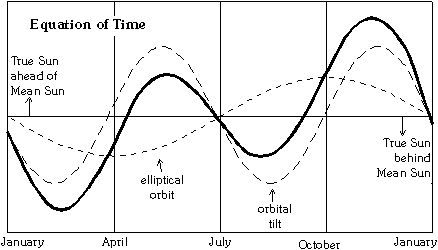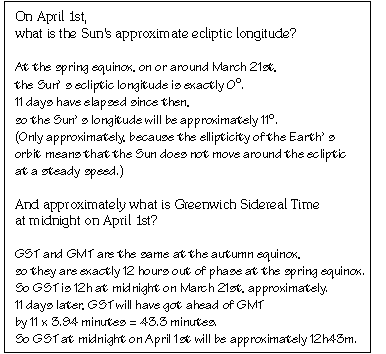
In the ecliptic system, the Sun's coordinates are fairly simple, because its ecliptic latitude is 0° at all times, while its ecliptic longitude constantly increases.
However, the Sun's longitude does not increase at a steady speed of exactly 360° a year. And it's important to know the Sun's position, because it's used for normal time-keeping (solar time, rather than sidereal time).
By Kepler's First Law, the Earth orbits faster at perihelion and slower at aphelion. So the Sun appears to move fastest along ecliptic in January and slowest in July. We can invent an imaginary Sun which moves along the ecliptic at a constant speed, coinciding with the true Sun at perihelion and aphelion. The true Sun gets ahead at perihelion and lags behind at aphelion: one cycle per year.

However, an object moving at constant speed along ecliptic is still moving at a varying speed with respect to the equator, since the ecliptic is tilted to the equator. Invent another imaginary Sun, called the mean Sun, which moves along the equator at constant speed; the true Sun appears to lag behind where the ecliptic is steeply tilted to the equator (around equinoxes) and catch up where it's nearly parallel (around solstices): two cycles per year.
Combining these two effects gives the total difference in time between the true Sun and the mean Sun, which is called the equation of time (the solid line on the diagram).
The interval between two meridian transits of the mean Sun is the mean solar day. The upper transit of the mean Sun across the local meridian marks midday, local mean time.
Greenwich Mean Time (GMT) is defined as midday when the mean Sun crosses the meridian of Greenwich. Apparent solar time, as measured by the the true Sun (e.g. on a sundial) will differ from GMT because of the equation of time, and also because of the longitude of the observer.
Britain uses GMT as standard time in winter, adding one hour in summer. Most other countries adopt their own standard time, suitable for their own longitude (large countries may have several time-zones), differing from GMT by a set amount.
In practice, the Earth's rotation is not quite constant. Time is now regulated by atomic clocks, and called Coordinated Universal Time (UTC), but this is artificially kept within 1 second of GMT by adding a "leap second" when necessary. Astronomers also use Terrestrial Time (TT, formerly called Ephemeris Time, ET) for describing the motions of solar-system bodies. The difference TT-UTC is called "delta-T".
At any location, local mean time and local sidereal time agree at the autumn equinox. (At the autumn equinox, the Right Ascension of the mean Sun is 12 hours, and the mean Sun is on the local meridian at 12h, local mean time.) But sidereal time runs faster than solar time, by one day a year, or approximately 3.94 minutes a day.

Return to index.